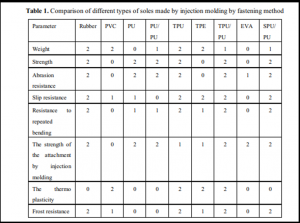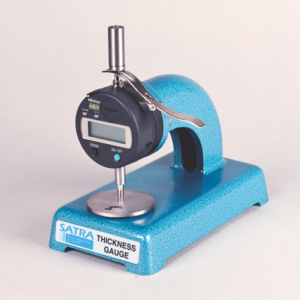polyurethane shoe soles (polyurethane for footwear)
The shoe sole is one of the most important parts of a shoe to create a sense of comfort. Polyurethane shoe sole creates this feeling by creating a soft texture and high elasticity and flexibility.
Light weight, resistance to chemicals, absorption of all kinds of shocks and stresses, waterproofness, resistance to wear and tear, high bending resistance and creating a suitable appearance are the important advantages and features of polyurethane shoe soles for use in the shoe industry.
Open-cell and closed-cell polyurethane foam can be used to produce polyurethane shoe soles, which are different depending on the type of use. Closed cell polyurethane foam is usually used in the outer sole of climbing shoes and safety shoes due to its high durability. Polyurethane shoe soles can be formed from cell foam again, and because it can’t act like closed cell foam in absorbing pressures and tensions. It is often used as a mid-sole in basketball and tennis shoes.
The polyurethane used in shoe soles is produced through the reaction between isocyanine and polyol (polyether-polyol or polyester-polyol) in the presence of a catalyst and heat, which is poured into the desired molds after production or injected directly.

By applying changes in various factors, the degree of hardness or density of the shoe sole can be changed.
Polyurethane shoe soles usually have less density than other types of soles such as PVC (polyvinyl chloride). As a result, it is lighter than some types of shoe soles. Due to its density and light weight, the sole of polyurethane shoes has a high resistance to wear.
Polyurethane shoe soles also offer various processes and provide the possibility of color processing, printing, etc. Therefore, polyurethane shoe soles can be completely customized.
This sole is produced for a wide range of applications. Shoe sole systems that usually use polyether-polyol in the sole construction. It leads to the production of highly flexible soles that have high physical and mechanical resistance and have a density between 0.40 and 0.65 g/cm3 and a degree of hardness (resistance to indentation) (45-85). Tt is usually used in making sandals.
Semi-hard shoe soles, which usually have a density between 0.34 and 0.40 g/cm3, are used in making high-heeled shoes.
The sole of the middle shoe is special for walking in the city and usually has a density between 0.42 and 0.55 g/cm3 and a degree of hardness (40-60) and provides excellent resistance to wear.
Very light shoe soles usually have a density between 0.34 and 0.40 g/cm3, which are very useful for expanded shoe soles such as sports shoes.
During the reaction process, isocyanines react with a large amount of polyol (polyester-polyol or polyether-polyol), which causes the release of millions of small bubbles, which makes the sole of polyurethane shoes especially light. It is in sports shoes.
Polyurethane shoe sole is highly resistant to chemicals, but it is not resistant to very strong acids and it is also resistant to heat and oil.
Double or double density polyurethane soles offer a combination of strength, flexibility and durability. This category of polyurethane shoe soles have a high resistance to material losses caused by some mechanical actions. They are also anti-static and have high slip resistance.
Advantages of double density polyurethane shoe soles
Anti-static (reducing the possibility of electric shock)
Light weight (due to the way polyurethane is formed in the reaction process)
Sweat absorbent
High resistance in different weather conditions
Creating an excellent insulation (keeping feet warm in cold seasons and cold in hot seasons)
Can be used for artisans and mine workers
Ability to withstand temperatures up to 95 degrees Celsius
Long life
High resistance to wear, impact, cracking and tearing
The polymer materials of shoe soles have a set of physical, mechanical, technological, etc. properties that determine the possibility of using them to make shoe soles.
* The following table compares the types of shoe soles made by injection molding and the closed method, as we can see, polyurethane has the lowest weight among the other polymer materials used in making shoe soles.

Assessing thickness and density of shoe sole foam
It is very important to reach the optimal thickness of the shoe sole. If the sole of the shoe is too thick, it increases the weight of the shoe and affects the flexibility and reduces it. On the other hand, the sole of the shoe is very thin, does not have enough insulation and is less durable against wear. The thickness of the shoe sole is measured using a thickness gauge. Determining the exact thickness of the sample is important in a number of tests, including tensile strength, bending, determining density and compression.
To determine the density of shoe sole materials, a thickness gauge is used, along with a precision scale and weight couplings. According to the type of shoe sole material, including leather, shoe sole foam, etc., different models of thickness gauges are used to measure density.

Contact us to order polyurethane, shoe soles and shoe glue

